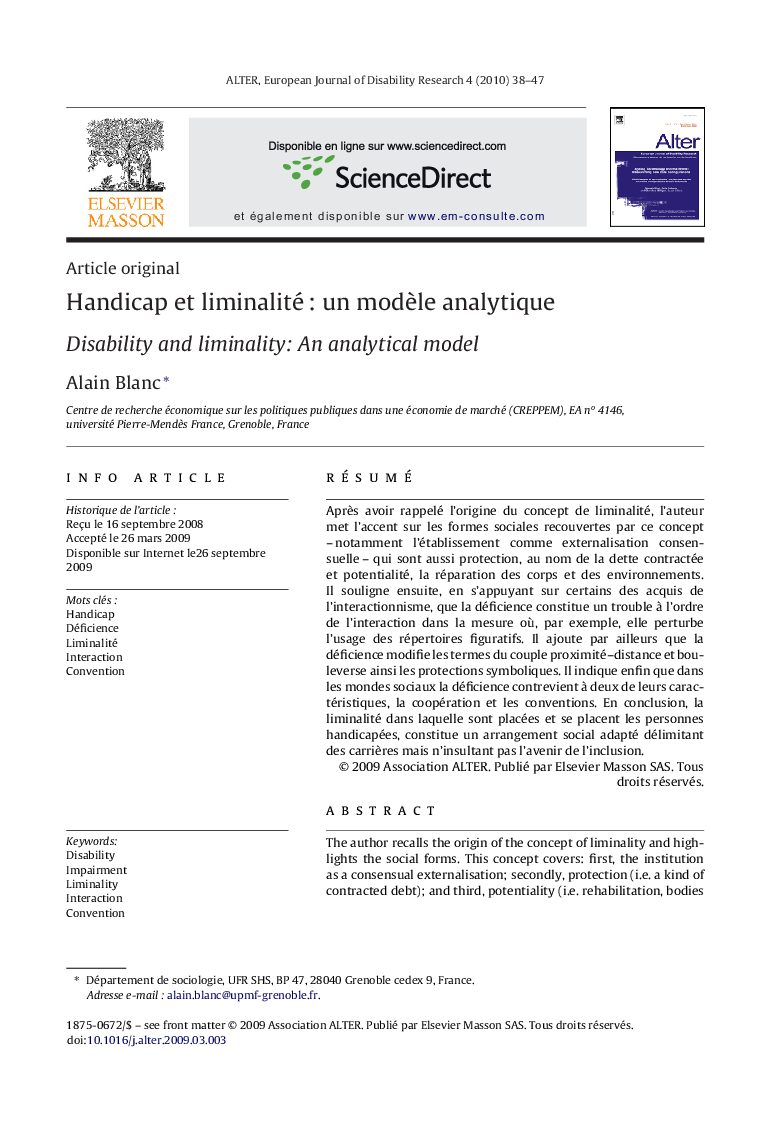| کد مقاله | کد نشریه | سال انتشار | مقاله انگلیسی | نسخه تمام متن |
|---|---|---|---|---|
| 1068269 | 949100 | 2010 | 10 صفحه PDF | دانلود رایگان |

RésuméAprès avoir rappelé l’origine du concept de liminalité, l’auteur met l’accent sur les formes sociales recouvertes par ce concept – notamment l’établissement comme externalisation consensuelle – qui sont aussi protection, au nom de la dette contractée et potentialité, la réparation des corps et des environnements. Il souligne ensuite, en s’appuyant sur certains des acquis de l’interactionnisme, que la déficience constitue un trouble à l’ordre de l’interaction dans la mesure où, par exemple, elle perturbe l’usage des répertoires figuratifs. Il ajoute par ailleurs que la déficience modifie les termes du couple proximité–distance et bouleverse ainsi les protections symboliques. Il indique enfin que dans les mondes sociaux la déficience contrevient à deux de leurs caractéristiques, la coopération et les conventions. En conclusion, la liminalité dans laquelle sont placées et se placent les personnes handicapées, constitue un arrangement social adapté délimitant des carrières mais n’insultant pas l’avenir de l’inclusion.
The author recalls the origin of the concept of liminality and highlights the social forms. This concept covers: first, the institution as a consensual externalisation; secondly, protection (i.e. a kind of contracted debt); and third, potentiality (i.e. rehabilitation, bodies and environments). Drawing on certain aspects of interactionism, the author argues that impairment is a disorder of the interaction in the sense that it hinders the use of figurative paradigms. Impairment also changes the closeness/distance relation and thus upsets the symbolic systems of protection. Finally, the author highlights the fact that in all social worlds, impairment contradicts two of their fundamental characteristics–cooperation and conventions. In conclusion, the author suggests that the liminality, in which disabled people are both placed and place themselves, is an adapted social arrangement, which defines and limits career choices but does not necessarily prevent future social inclusion.
Journal: ALTER - European Journal of Disability Research / Revue Européenne de Recherche sur le Handicap - Volume 4, Issue 1, January–March 2010, Pages 38–47